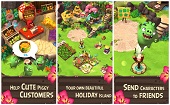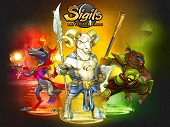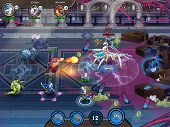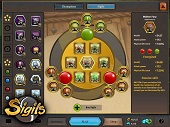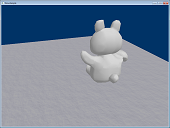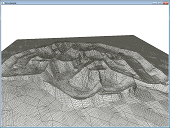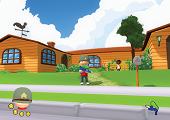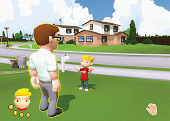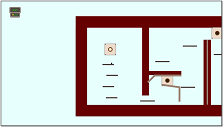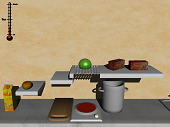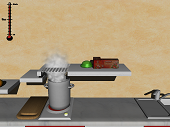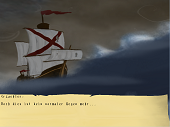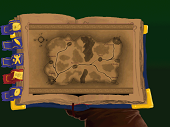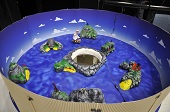Portfolio
| Year: | 2015/16 |
| Genre: | Farming Game (iOS) |
| Technology: | Athena 2 (Sproing Engine - C++) |
| Roles: | Programmer, Release Manager |
| Main tasks: | Improving subsystems (e.g. grid), Implementing game features (e.g. production buildings), Managing Perforce Streams, Coordinating new game releases |
Angry Birds Holiday was a farming game for iOS. The player had to build a holiday resort where the needs of the visiting piggies had to be fulfilled (e.g. provide everything for a spa visit).
Initially I joined as a regular programmer where I spent most of the time improving existing subsystems. The first big task was the refactoring of the grid system. The old grid got replaced with a new one (that had a cleaner interface and was easier to use). Also, I've added multi grid support so designers could use the whole island. The next bigger task was the refactoring of the camera system (split the camera code into multiple files where every different camera behavior had its own class). Besides the refactorings I also worked on new features like a system for all the production buildings.
Later on, when we started the soft launch of the game, I got the job as a Release Manager to coordinate the development so maintaining a live version was possible. I was responsible for creating/copying/merging Perforce streams and to coordinate the release of new versions, starting from the release candidate creation over the Apple submission and deployment test runs to actually putting the version onto the live servers.
| Year: | 2012 - 2015 |
| Genre: | MOBA (iOS) |
| Technology: | Athena 2 (Sproing Engine - C++), Photon Server |
| Roles: | Programmer, Lead Programmer (after about 1 1/2 years in the project) |
| Main tasks: | Implementing realtime-multiplayer part of the game, Leading the programming team |
Sigils - Battle for Raios was a free to play MOBA for iOS. The player could choose between some (animal) champions and was able to either play versus other players (1vs1, 3vs3) or play together with other players versus bots (something like a story mode).
As I joined this project directly from university I got some smaller tasks first (like porting the particle system from another game). Later on I was responsible for adding the network code on top of the existing offline game/prototype. So I had to make sure everything was synchronized correctly and to deal with typical network issues (like latency, jittering).
After not even two years I got the role as lead programmer in the team. From then on I mainly focused on coordinating the team, planning and estimating coming tasks and coordinating the release process of new versions.
| Year: | 2010/11 |
| Technology: | DX11, Compute Shader, Tessellation, HLSL |
In this project I implemented an (abstract) snow simulation on the GPU which detects object/snow intersections and resolves them.
Therefore, I have written a very simple 3D graphics engine based on DirectX 11 which provides the possibility for multiple renderpasses, materials, loading object files, overlays, multiple viewports, cameras, etc.
To take advantage of the parallel processing power of modern GPUs, the simulation itself uses Compute Shaders for most parts. To limit the CPU -> GPU transfer, the project uses tessellation to create additional geometry on the GPU.
| Year: | 2009/10 |
| Technology: | Ogre, FMOD, Bullet, xaitment, Lua |
| Roles: | Project Lead, Technical Lead |
| Main tasks: | Game Architecture, Lua integration |
TGTN is a 3D action adventure in which the player takes control of a young "gang" leader who is trying to gain control over the neighborhood.
The game has been created during the first two semesters of my masters program. It uses OGRE, FMOD, OIS, Bullet and Lua for its main components.
Other than the organizing tasks, which come with being the Project Lead and Technical Lead, my responsibilities included:
- implementing the main game architecture
- Lua integration (SWIG)
- UI
- sound and various other gameplay features.
| Year: | 2009 |
| Technology: | ActionScript/C++, Box2D |
| Main tasks: | game architecture, gameplay, level editor |
ROTATOR is a simple skill game. The player has to get the ball into the yellow target area using the level's rotatable elements.
The first version of the game has been created with Flash/ActionScript. Due to great reception, I reimplemented it in C++ to increase the playability. You can download a third version, which was used to test the functionality of the game engine I'm currentyl working on.
| Year: | 2009 |
| Role: | intern |
| Main tasks: | screen conversions, widget control( both C++), tool programming( C#) |
| Link: | FIFA Manager 10 |
In this game, you take control of a soccer club of your choice and try to win every major soccer tournament by investing in the right players an choosing the best tactics.
My main responsibilities as an intern included implementing widget control and converting screens to their new version/design which often included small functionality changes (C++).
Furthermore, I implemented a small tool which helped the game designer create helptexts (C#).
| Year: | 2008/09 |
| Technology: | Ogre, Bullet |
| Roles: | Project Lead, Technical Lead |
| Main tasks: | game architecture, gameplay, level loading |
Wobble is a Jump & Run Sidescroller in which the player has to guide a "wobbling" ball to a finish area, altering the temperature of the ball according to the obstacles. A cold ball can jump higher, whereas a hot one can even glide through small holes.
Apart from being the Project Lead, my responsibilities included the implementation of the gameplay, Bullet/OGRE combination (especially regarding softbodies) and level loading.
| Year: | 2007/08 |
| Technology: | C++, DirectDraw |
| Roles: | Project Lead, Technical Lead |
| Main tasks: | game architecture, gameplay |
Ikanaria is a 2D RPG with dynamically developing towns. By finishing quests, the player gains the trust of the town. The higher the trust, the more citizens are willing to fight as soldiers by your side.
This was my first real game using C++ (and the code is a cruel witness ;-) ). My main tasks included creating the game architecture (I somehow feel bad about using the word architecture here ;-) ) and implementing the game logic.
Other stuff
| Year: | 2010 |
| Technology: | Webcams, VLC |
In the third semester of the masters program, we had a course focusing on game design in combination with rapid prototyping. The great reception of the final projects led to an invitation to the Ars Electronica Festival 2011 in Linz for which we created another game - Pirates of the Deep Space.
All the gameplay was performed by us without a computer. The only computer in use was the one with the webcams and the beamer connected to it.

